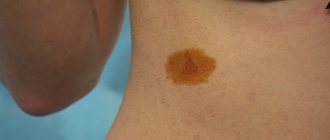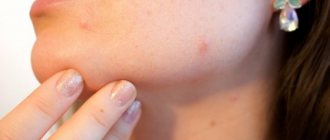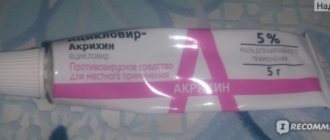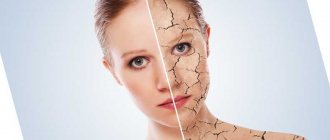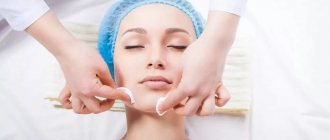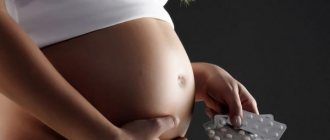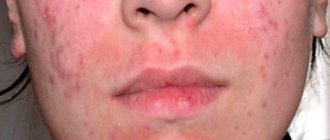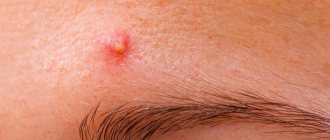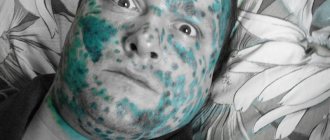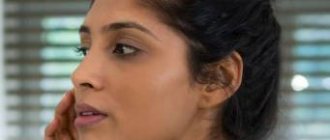.
A fungal or viral infection of human skin is called lichen. If you see a pink, scaly spot on your baby’s body, it is possible that your child has a pathology. There are different types of disease. Knowing what type of lichen the child has, you will understand how to behave with the patient. A pediatrician should be involved in the treatment of a young patient.
Children may experience different types of lichen
girdling
The cause of shingles is the herpes virus, which also causes diseases such as chicken pox. Until recently, doctors were categorical about washing in case of this disease. It was generally accepted that when such a procedure was carried out, the infection spread and rashes appeared on other parts of the epithelium.
At the moment, doctors have a slightly different opinion about whether it is possible to swim with lichen. Most of them allow the implementation of water procedures, but a number of restrictions are taken into account:
- swimming is allowed only if the body temperature is normal;
- Swimming in the bath is not allowed; you can wet the affected areas only with the help of a shower, and then only for a short time;
- the use of ordinary gels and soaps is allowed;
- It is strictly forbidden to rub the affected areas with a washcloth or towel;
- you cannot visit public baths, saunas and swimming pools;
One of the most important conditions for bathing with shingles is the use of a personal towel and washcloth.
It is recommended to use gels and liquid soaps as an alternative to regular soap. When carrying out water procedures, you must be as careful as possible so that the blisters of the rash are not damaged, as this may lead to re-infection.
Why is hygiene necessary?
When a pathological process recurs, an important issue remains not only effective treatment, but also compliance with the rules and regulations of personal hygiene and body cleanliness. If you do not properly observe the rules of personal hygiene, a patient with this diagnosis may develop bacterial and inflammatory complications as a burden. As a consequence, deterioration of the patient’s general condition and the course of herpes disease.
In addition, it is important to keep the areas affected by lichen clean - certain stages of its course occur with the release of liquid from the bursting bubbles, which contains a large amount of the pathogenic virus.
As a result, bathing and maintaining good personal hygiene are the key to a clean body, as well as reducing the likelihood of inflammation in the affected areas of the body.
Shearer
Ringworm, also known as ringworm, can be caused by several types of fungus. Trichophytum is transmitted exclusively from person to person, but Microsporum can also be acquired through contact with animals. Inflammation is most often noticed in the scalp area.
This kind of lichen in humans takes quite a long time to be treated, due to which it is simply impossible to do without washing. In case of damage to the scalp, the need for a short haircut stands out among the main recommendations. You should wash your hair every day, but use special shampoos that help fight fungus.
You can use tar soap, but it is better to purchase shampoo that contains sulfur and selenium. Such a detergent will not only speed up the process of destroying fungal spores, but will also speed up the recovery period as much as possible. Washing shampoo is applied to the hair every day, but only if no suppuration was found on the affected area.
If someone close to you gets sick, then for preventive purposes it is recommended to use a special shampoo for all organs of the family up to twice a week.
Ringworm is considered one of the most contagious among the varieties of this disease. It is quite possible to become infected if you use a patient’s hygiene items. That is why you should be as careful as possible if there is already a carrier of infection in the house.
Types of pathology
We will consider the types of lichen in children in detail.
- Shearer. This form of the disease occurs in boys and girls of infancy and older.
- Pink. This type of disease affects children of primary school age. The appearance of skin pathology is preceded by intestinal infections, vaccinations, and feverish conditions.
- Red flat is very rare in children.
- Encircling.
- Pityriasis (colored) is caused by yeast-like fungi.
Not all types of lichen formations are contagious, but if you see a pink rash on your baby’s skin or spots with scales peeling off, you should take your child to the pediatrician. After recovery from lichen, the baby does not develop lifelong immunity.
Pityriasis
This disease has more than one name. It is also called sunny, colorful and multi-colored. Its appearance is caused by a yeast fungus. The development of the disease begins due to suppression of the immune system and some other factors.
Among the causes of sun lichen, excessive sweating of the skin is also noted. That is why washing in this case is considered a preventive measure.
It is with this type of disease that it is strongly recommended to carry out water procedures regularly, but exclusively with the use of antifungal drugs. Affected areas should be treated with acidified liquid. Clothing and all linen must be disinfected.
Symptoms
After suffering from a cold or stress or hypothermia, symptoms of pityriasis rosea - a rash - may occur. But before this, headaches, joint pain, and a slight increase in temperature may also occur.
The main symptom of pityriasis rosea is a pinkish spot, which has an approximate size of 3–5 cm or more. It can be called a maternal plaque - in the first days - a single spot. Later (after 7–10 days), similar small pink spots, 0.5–2 cm in size, spread across the skin. After a few more days, the center of the spot becomes lighter, and the stratum corneum wrinkles and gradually cracks, forming scales. In this case, the central part of the lesion itself is free from scales and looks like a slightly swollen ridge.
Zhiber's pityriasis rosea can spread freely in the chest, thighs, back, abdomen, on flexor surfaces, etc. Sometimes the rash is accompanied by skin itching, which intensifies when irritated by clothing or cosmetics.
Typically, pityriasis rosea appears on the skin for two to three weeks, during which about 10 outbreaks of new rashes may occur, which disappear later (after 7-8 weeks). Where there were former lesions, pigmentation is slightly noticeable - it usually goes away spontaneously after some time. Irrational treatment or any other provoking factors can complicate the disease with various bacterial infections.
There are also atypical manifestations of pityriasis rosea that are not accompanied by characteristic symptoms. For example, there may not be a maternal plaque, but there may be small pink spots over the entire surface of the skin. It is rare, but a long course of the disease also occurs - from two to six months.
Gibert's disease
With pityriasis rosea, pink spots appear, clearly delimited from each other. The reasons for its appearance, as well as the pathogen itself, are currently unknown.
Doctors still do not know for sure whether it is possible to wet the affected areas, but no negative consequences have been found. On the contrary, itching is greatly reduced after a cool shower, and the epithelium itself calms down. Due to this, it can be argued that taking a shower with this disease is beneficial.
Do not wet your skin with hot water or take baths - prolonged exposure to moisture is not recommended.
All rules for implementing water procedures for Zhiber's lichen are as follows:
- It is better to take a cool shower than a bath;
- The use of ordinary detergents is allowed, but it is still better to give preference to hypoallergenic ones, especially if children are susceptible to the disease;
- the use of hard washcloths is excluded;
- Scrubs are strictly prohibited;
- when bathing, use the softest towel possible and do not rub the skin, but only get wet;
- ointments are applied to the affected area after taking a shower, and not before it.
Diagnostics
The diagnosis is made based on anamnesis (medical history), clinical symptoms and by excluding other diseases. Laboratory diagnostics do not give characteristic signs of pityriasis rosea (remember that the cause of the disease has not been established).
Zhiber's pityriasis rosea should be differentiated from a number of skin diseases:
- Pityriasis (multi-colored) lichen. The main difference is that with pityriasis versicolor, microscopic examination reveals fungal mycelium. Read more about pityriasis versicolor.
- Secondary syphilis. All patients with suspected pityriasis rosea should be examined for syphilis!
- Eczema.
- Psoriasis. Unlike psoriasis, there is no psoriatic triad in pityriasis rosea. Read more about psoriasis.
- Parapsoriasis
- Measles and rubella
- Trichophytosis
- Urticaria – in the initial stage with the urticarial form of the disease.
Forecast
Any actions, including water procedures, must be agreed with the attending physician. The decision largely depends on the individual characteristics of the patient and the course of the disease itself.
A highly qualified specialist will assess the situation and give all the necessary recommendations regarding treatment and the actual water procedures themselves. At the same time, it relies not only on the disease itself and its form. The instructions will vary depending on whether the patient is an adult or a child.
In the previous article, we talked about what pink lichen (lichen of Zhiber) is and how it can manifest itself in children or adults. We also found out that although the disease is unpleasant, it passes quite quickly, it is not contagious and does not cause severe trouble to its owner. This type of lichen does not cause any consequences or unpleasant complications, however, the visual picture is not aesthetically pleasing and we need to talk about how it can be cured.
Treatment of pityriasis rosea. We talked about the fact that this type of lichen can go away on its own within about six months, sometimes earlier, so is it worth treating it at all? It is also worth talking about what the treatment should be like for it to be effective and what measures are needed to prevent the skin from itching and scratching.
Although pityriasis rosea does not pose a threat to the health and life of patients, does not cause any complications, and can go away on its own within a few months, in some cases it needs to be treated. If the manifestations of pityriasis rosea do not bother the patient much, experts may recommend simply not taking any action and not conducting any special treatment. To help relieve itching, doctors may recommend regularly lubricating pityriasis rosea spots with moisturizing creams or ointments. If the lichen still itches very much, you should definitely tell your doctor about it. In such cases, he may give you antihistamines to relieve the symptoms of itching. Such drugs may include suprastin, tavegil or claritin.
It is also worth discussing whether you need to take antibiotics or any of the antiviral drugs if you have pityriasis rosea. According to some scientific studies, it has been found that the use of erythromycin or acyclovir for pityriasis rosea helps in accelerating the treatment of pityriasis rosea and the healing of plaques, the drugs can help relieve itching. However, such data are still scarce and require further verification. Therefore, today it is not recommended to use any antibiotics or antiviral drugs for pityriasis rosea.
How can you treat or apply stains if you have pityriasis rosea? There are many recipes on the Internet for eliminating pityriasis rosea by treating plaques with iodine, boric acid, and vinegar. Sea buckthorn oil, sulfur ointment, zinc ointment or antifungal drugs in creams and ointments are also used. But dermatologists are critical of such treatment methods; they do not note the high effectiveness of these procedures in the treatment of pityriasis rosea. There is no proven evidence of the effectiveness of these procedures in eliminating plaque. Also, for pityriasis rosea, no diet is effective; you do not need to follow a strict diet to treat plaques.
Questions regarding pityriasis rosea. Often, those who are faced with the problem of pityriasis rosea have numerous questions regarding life with this disease. We will try to give full answers to them in order to finally reveal the topic of pityriasis rosea. One of the main issues when you have skin rashes is the possibility of exposure to the sun, tanning and relaxing at seaside resorts. Doctors say moderate sun exposure can be beneficial if you have pityriasis rosea. But if you are planning to go on vacation at the seaside, you need to make every effort not to burn out. Having a sunburn can make your skin itch and itch even more than before. In addition, excessive exposure to the sun or visiting tanning salons can accelerate the aging of the skin, increasing the likelihood of developing skin cancer.
No less relevant will be the question of whether it is possible to take a shower or swim in a bath if you have pityriasis rosea. If you or your children have contracted pityriasis rosea, swimming with it is not prohibited. At the same time, to relieve itching of the skin, you can use cool or warm water for bathing; hot water may intensify the itching. You can use your usual body wash products for bathing, or switch to delicate and moisturizing formulations. To prevent dry skin, you should use moisturizing lotions or body milk after a bath. Do not rub the elements on the skin too hard with a rough washcloth; they may then itch and flake more.
Is it possible to go to the beach and swim in the sea?
Many patients are interested in whether it is possible to go to the beach and swim in the sea with lichen in the summer? The answer will depend on the type of disease and the individual characteristics of the body.
If you have shingles and ringworm, you should refrain from sea swimming and sunbathing until the inflammatory process subsides. With lichen Zhiber sometimes sea bathing gives a positive result, but in some patients sea water increases irritation.
It is not for nothing that lichen versicolor is called solar lichen; in many patients, exposure to ultraviolet radiation causes an exacerbation of the process. Therefore, patients should refrain from visiting beaches.
The individual characteristics of the course of the disease cannot be discounted. Before carrying out any procedures involving water, you should consult a dermatologist. An experienced doctor who monitors the development of the disease will give the most accurate and complete recommendations for hygienic and hardening procedures.
brief information
The herpes virus is contagious, so the patient needs to isolate himself if possible. Children who come into contact with someone who is infected may get chickenpox. It is quite difficult to recognize shingles right away. A few days before the rash appears, a person experiences malaise, headache, and sometimes a fever. The condition is more reminiscent of a cold or acute respiratory infection. At the sites of future rashes, an unpleasant burning sensation, swelling, itching, pain, tingling or partial numbness occurs. After 3-4 days, a rash in the form of red pimples appears on the back, sides, and stomach.
For herpes zoster, replace the bath with a warm shower, and use a soft sponge instead of a washcloth.
The virus lives in herpes secretions, so it is important not to scratch pimples so as not to provoke infection of other parts of the body. Herpes zoster mainly affects children and older people aged 60-70 years. Rashes appear on the back, chest, neck, sides, and less often on the face and in the upper and lower eyelids. If the neck and face are affected, deafness and postherpetic neuralgia may develop.
Possible complications
Pediatricians remind: a fungal disease is dangerous not only because it can leave the baby with scars on the back or bald spots on the head, but the activity of pathogenic organisms sometimes causes severe chronic illnesses. With advanced lichen, the following diseases may occur in children:
- stomatitis;
- encephalitis;
- atopic dermatitis;
- inflammation of the optic nerve;
- meningitis;
- purulent inflammation of the sweat glands.
Meningitis is one of the consequences of advanced lichen
Water procedures for lichen
Shingles requires long-term treatment, so waiting until it goes away to wash is unhygienic. Before taking water treatments, consult your doctor. In some cases, doctors recommend refraining from washing for several days, especially for children with high body temperature. If you have herpes zoster, it is better to take a warm shower. The lack of water procedures for this disease can lead to complications. The area of the rash must be clean, as herpes blisters burst and infection, dirt, dust, and lint from clothing can get into them.
Before starting water procedures, consider the following factors:
- You should not take a shower at elevated body temperature;
- use liquid soap or gel as a hygiene product;
- the towel should not be hard;
- It is not recommended to rub the site of herpetic rashes with a washcloth;
- the shower should be short;
- It is prohibited to visit the bathhouse, swimming pool, sauna.
Is it possible to wet the skin for various types of lichen in humans?
- Patients are advised to keep their hair cut as short as possible so that the hair does not interfere with treatment (this type is usually located on the scalp and hair will often need to be shaved off to monitor treatment).
- Treatment includes daily use of antifungal medications. Special soaps or shampoos are used to help cure ringworm. They recommend washing your hair every day, only if there is no severe purulent inflammation.
This disease is caused by an infection and manifests itself on the human body as an allergic reaction - a pink rash, which is why it got its name. Zhibera is not transmitted by airborne droplets or direct contact. Ringworm occurs against the background of a previous cold and most often in people aged 10 to 60 years.
How to bathe a child with lichen?
In children, the herpes virus causes chickenpox. When you can bathe your baby, the pediatrician should decide. Chicken pox also manifests itself individually. Some children have acne covering their entire body, while others have a rash only in some places. A mild form of chickenpox is tolerated by a child easily and without complications. Therefore, bathing depends on the nature and stage of the disease. In teenagers who had chickenpox as children, the virus can cause shingles.
Whether it is possible to bathe a child with herpes zoster should be decided by a pediatrician.
Just like an adult, a teenager feels unwell in the first days, after which a characteristic rash appears on the body. You can and even need to swim before it occurs, because in the first days after herpetic acne breaks out, there will be no opportunity to wash yourself. Most often, children get sick from autumn to spring. This is explained by the fact that the virus is activated under the following conditions:
- hypothermia;
- decreased immunity;
- contact in school institutions with sick children;
- the presence of other infectious diseases;
- stressful situations.
Probably, most parents have noticed that as soon as a teenager gets sick, herpes appears on the lips and nose. This occurs due to weakened immunity during illness. The virus becomes more active and characteristic rashes appear. Shingles appears for the same reasons, but it is more difficult to treat and requires a longer period. Antiviral ointments and tablets are prescribed as therapy. Before your teen gets in the shower, blot the rash with a clean tissue to remove any remaining medication. After this, you can cover the problem area with a band-aid.
It is recommended to reapply the ointment or gel after the herpetic lesions have dried. However, you should not rub the pimples with a towel to speed up the process. Let the teenager just be without clothes for a while. If the affected area was covered with an adhesive bandage before swimming, it should be carefully removed and the acne treated as recommended by the doctor. You should not use lotions or herbal baths to relieve the condition. Otherwise, it may cause the virus to spread throughout the body.
Preventive actions
Prevention of lichen in children consists of observing the following rules:
- you need to eat a balanced diet;
- it is important to selectively show tenderness towards wildlife: if you are not sure of the impeccable health of your pets, do not allow the baby to cuddle with them and invite them to your bed;
- you need to maintain a calm, friendly environment in the house - this is the easiest way to maintain health;
- It is important to exercise moderately.
Bathing an elderly man with herpes
Infecting an elderly person with the herpes virus creates great difficulties. It is more difficult to bathe a patient due to the fact that older people have a harder time with this pathology. The herpes zoster virus often affects people who have undergone chemotherapy. An elderly person with cancer is not always able to take a shower on his own. Therefore, doctors advise doing wet wipes to such patients. To do this, you will need a basin with warm water and a washing gel (preferably without dyes) to avoid an allergic reaction. You can use liquid soap for children.
Shingles requires long-term treatment, so waiting until it goes away to wash is unhygienic. Before taking water treatments, consult your doctor.
Add a little detergent to warm water, wet the cloth and rub the patient with light movements. However, do not touch the shingles area. If you need to clean the infected area, take a small piece of gauze and treat the pimples without tearing off the scab. If the elderly person is able to shower on his own, cover the affected area with a bandage. Keep in mind that even with the most careful bathing, you will not be able to completely protect yourself from water getting into the infected area.
Therefore, discuss with your doctors whether it is possible to wet the rashes or whether you should refrain from water procedures for some time. Even if herpes acne has crusted over and the patient is recovering, washing too thoroughly can cause the wounds to open and the itching and pain to return. In some cases, daily showering provokes further rashes throughout the body.
Ringworm is transmitted through clothing in a store
If ringworm were so easily transmitted, we would all have been infected a long time ago. To become infected after trying on, you need to have many, many pathogens on the dress or jacket. Even if this thing was previously measured by three infected people, there will still not be enough pathogens.
The primacy of “distribution” of lichen still remains with kittens and puppies from the street. Be afraid of them!
Swimming in the river for lichen
Shingles has 3 types. Hemorrhagic herpes manifests itself as rashes in the form of blisters with bloody content. Lichen bullosa is characterized by large rashes with jagged edges. The abortive appearance is manifested by the absence of acne and severe pain. This is a mild form in which you can take water treatments. However, swimming in a river or sea is prohibited for any type of pathology.
Elderly people with herpes zoster are recommended to wipe with a sponge moistened with warm water and soap. In this case, you should not wet the affected areas of the skin.
A patient with herpes zoster is advised to rest throughout the entire period of the illness. If left untreated, complications may occur in the form of damage to the liver, lungs, brain and spinal cord. Therefore, the patient is prescribed complex treatment. After shingles, pink marks remain at the site of the rash for some time, but such a person is no longer contagious. Over time, the scars disappear or take on the color of the skin.
Prohibited actions
To confirm the diagnosis, you should show your baby to a pediatrician or dermatologist. What you think is ringworm may actually be an allergy. What not to do if a pink spot appears on your child’s stomach or cheek:
- allow healthy family members to dry themselves with the young patient's towel;
- use the patient's toothbrush;
- wet the inflamed areas of the child’s skin: after contact with water, the area of fungal infection increases;
- smear the lichen formations with a cream purchased on the advice of friends or acquaintances: there are different types of fungal and viral infections, so what helped your neighbor’s baby may cause complications for your baby;
- feed your preschooler spicy and fatty foods;
- Dress the young patient in synthetic clothing.
A sick baby's toys should be washed using disinfectants.
Until you are sure that the form of the disease is not contagious, do not allow him to play with healthy peers.
A sick child's toys should be washed with disinfectants.
Treatment
Treatment for pityriasis rosea in humans has not been clearly developed by doctors. Pityriasis rosea, for which it is still advisable to treat, very often goes away on its own. As soon as secondary rashes begin, you need to ensure that there is no pressure or friction (for example, from clothing) on the affected areas of the skin, which can cause rosacea in an irritated person.
For severe itching caused by pityriasis rosea of Zhiber, treatment is based on the following drugs:
- low-strength corticosteroids (topically);
- antihistamines;
- antipruritic mixtures (prescription).
If you want to eliminate pityriasis rosea as quickly as possible, treatment of the disease should be based on the use of the immunomodulator “Likopid” (1 tablet 10 mg for 10 days).
By and large, the most popular question from patients is “I have pityriasis rosea, how to treat the disease?” has a pretty clear answer.
Zhiber's pityriasis rosea will leave a person forever if the following manipulations are carried out:
- You need to take a shower without using a washcloth;
- It is advisable to visit the solarium (about 10 sessions of 3-5 minutes each);
- quartz skin;
- tanning in moderate doses (can replace solarium and quartz treatment).
Studies have been conducted according to which, in the first days of the onset of the disease, taking acyclovir and erythromycin, as well as ultraviolet irradiation, lead to a more uncomplicated and rapid course of the disease.
After successful treatment, it is necessary to use vitamins (Fenuls, Vetoron-E).
In general, treatment for pityriasis rosea is as follows:
- taking antihistamines to relieve itching;
- hypoallergenic diet;
- the use of external antipruritic agents (for example, Fenistil-gel) and corticosteroid ointments as recommended by a doctor;
- It is imperative to stop drinking alcohol, which can worsen the patient’s condition;
- the amount of cosmetics applied to the body must be limited;
- use of immunomodulators (“Likopid”);
- use of vitamins (Fenuls, Vetoron-E);
- Sunbathing, quartz treatment or solarium are recommended.
Pigment spots are visible on the skin after the illness for about a month, which disappear on their own over time.
In addition, it is strictly forbidden to comb areas of the skin affected by lichen, wear clothes made of synthetic and woolen fabric, and also allow great mental and physical stress.
Folk remedies for the treatment of pityriasis rosea
There are several folk remedies that help relieve itching and discomfort during illness:
- Calendula ointment relieves itching. To make it at home, you need to take about 10 grams of calendula flowers (dry), grind them and mix with 50 grams of Vaseline. This product should be used 2-3 times a day, applying the ointment to the diseased areas of the skin;
- Itching caused by pityriasis rosea can be relieved by using a cabbage leaf. It must be spread with sour cream and applied to the skin until the sour cream is completely dry, then replaced with fresh one;
- Ringworm can be lubricated with various oils (St. John's wort, sea buckthorn, peach) and ointments with talc, glycerin, zinc oxide, which can be purchased at any pharmacy.
